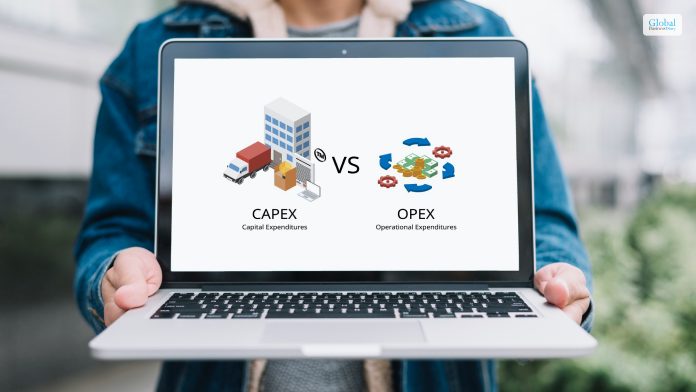How Specialist Brokers At Jones & Young Can Simplify Your Mortgage Journey

Embarking on the journey of buying a home is a landmark event in many people’s lives, symbolizing not just a financial investment but also the fulfillment of personal aspirations. However, the route to achieving this dream is often laden with intricate financial decisions and processes, particularly when it comes to securing a mortgage. It’s a path that requires navigating through a dense forest of interest rates, loan terms, and regulatory requirements.
This is where the expertise of specialist mortgage brokers at Jones & Young becomes invaluable. These professionals do more than facilitate transactions; they serve as trusted advisors and advocates, ensuring that one of the most significant financial decisions of your life is made with clarity and confidence.
This blog delves deeper, highlighting the substantial Benefits of Hiring a Mortgage Broker and detailing how the seasoned team at Jones & Young can not only simplify but also enhance your mortgage journey. Their role in demystifying the complexities of the mortgage process is crucial, particularly in an economic climate that is constantly evolving, presenting new challenges and opportunities for prospective homeowners.
By exploring the expertise and personalized service offered by Jones & Young, we aim to provide an insightful guide for those navigating the mortgage landscape, demonstrating how specialist advice can transform a potentially overwhelming process into a manageable and successful experience.
The Role of Specialist Mortgage Brokers
Mortgage brokers serve as intermediaries between borrowers and lenders. Their primary role is to assist clients in finding the best mortgage products that suit their specific needs and financial situations. The specialist mortgage brokers at Jones & Young excel in this role, bringing their wealth of experience and in-depth industry knowledge to the table.
Why Choose Jones & Young?
Jones & Young stands out for several reasons. Their team of specialist brokers possesses an in-depth understanding of the market, ensuring that clients receive tailored advice and solutions. Their commitment to providing personalized service means they take the time to understand each client’s unique situation, enabling them to offer bespoke mortgage advice.
Simplifying the Mortgage Process

The process of obtaining a mortgage can be filled with complicated terms, procedures, and paperwork. Specialist brokers at Jones & Young simplify this process by handling the majority of the administrative tasks, ensuring a smooth and hassle-free experience for their clients. From application to closing, they guide clients through every step, demystifying the complexities of mortgage procedures.
Access to a Wide Range of Products
One of the key Benefits of Hiring a Mortgage Broker is the access they provide to a broader range of mortgage products. Jones & Young have established relationships with a wide variety of lenders, including those not accessible directly by consumers. This extensive network enables them to find competitive rates and terms that might otherwise be unavailable, ensuring clients get the best deal possible.
Expert Advice and Support
The property market is constantly evolving, and staying abreast of these changes is crucial. The specialist mortgage brokers at Jones & Young are well-informed about the latest market trends, regulatory changes, and lending criteria. This expertise allows them to provide valuable advice, helping clients make informed decisions.
Tailored Solutions for Complex Situations
Not all mortgage needs are straightforward. Some clients may have complex financial situations, such as self-employment or a non-traditional income source, making it challenging to secure a mortgage. Jones & Young’s brokers specialize in handling such intricate cases, offering custom solutions that cater to these unique circumstances.
Time and Cost Efficiency
Another significant Benefit of Hiring a Mortgage Broker is the potential for time and cost savings. The brokers at Jones & Young do the legwork of researching and comparing mortgage options, saving clients considerable time. Additionally, their negotiation skills often result in more favorable loan terms, potentially saving clients money over the life of the mortgage.
Stress Reduction
Securing a mortgage can be a stressful experience, filled with uncertainties and anxieties. Having a specialist broker by your side can significantly reduce this stress. The team at Jones & Young provides constant support and reassurance, ensuring clients feel confident and informed throughout the process.
Building Long-Term Relationships
At Jones & Young, the relationship with clients doesn’t end once the mortgage is secured. Their brokers provide ongoing support, offering advice on mortgage renewals, refinancing, and any changes in circumstances that might impact the mortgage. This long-term approach ensures clients have a trusted advisor to turn to for their future mortgage needs.
Navigating the Regulatory Landscape
The mortgage industry is heavily regulated, and keeping up with these regulations is vital. The specialist mortgage brokers at Jones & Young are well-versed in the legal aspects of mortgage brokering. They ensure that all transactions comply with regulatory requirements, providing peace of mind to their clients.
Conclusions
In conclusion, the pathway to securing a mortgage, while inherently complex, can be significantly simplified with the expert assistance of a specialist broker. The specialist mortgage brokers at Jones & Young epitomize the ideal blend of knowledge, experience, and personalized care. They not only demystify the mortgage process but also provide tailored advice and solutions that align perfectly with each client’s unique circumstances.
The Benefits of Hiring a Mortgage Broker – ranging from access to a wider array of mortgage options to the provision of ongoing support and advice – are invaluable. Such expertise becomes especially crucial in an era where market fluctuations and regulatory changes are commonplace. For those embarking on the journey of homeownership, the guidance of a seasoned broker like those at Jones & Young is more than just a service – it’s a partnership that paves the way to achieving one’s property aspirations with confidence and ease.
Read Also:













